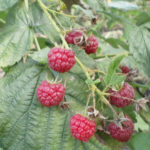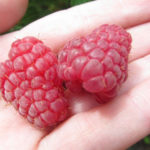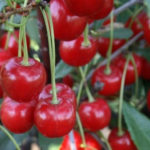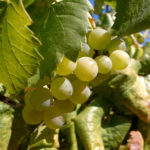Elizabeth blueberry variety
A variety named after the "queen of the pigeons". This is the name given to Elizabeth Coleman White from Whitesbaugh, New Jersey, USA. The woman who stood at the origins of the multi-billion dollar industry today. She was the first to select from the wild and grow plants suitable for commercial purposes. At that time, farmers did not consider blueberries an economically interesting crop, growing mainly cranberries. But thanks in large part to the perseverance, perseverance and hard work of Miss White, over time, their opinion has changed to the opposite. In 1927, she helped organize the New Jersey Blueberry Cooperative Association, and in 1929 she became the first female president of the Cranberry Growers Association.
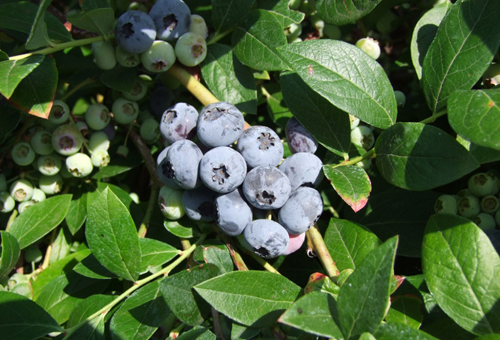
An interesting fact showing how a person really loved his job. Died Elizabeth Coleman White in 1954. In her written will, she wished that after cremation her ashes would be scattered over her beloved blueberry fields and cranberry swamps. And that was done. So in every bush growing in that area now there is a piece of the blueberry queen - Elizabeth White. And why the gardeners of the same name are so fond of the variety of the same name and is it worth any attention at all - in our article below.
History of creation
At the beginning of the twentieth century, American E. White, the daughter of a cranberry farmer, thought about creating varieties suitable for commercial sale. They had to combine, in addition to large-fruited, high aroma and taste qualities. She headed the research of blueberries and literally "searched" all the eastern states of America in search of wild bushes with the most delicious, large and fragrant berries. The researcher was actively involved in the search for local residents who know the forests and what grows in them. They were promised to pay generously for finding the bushes with the largest fruits.
But she could not find a plant with such characteristics as she wanted. After 1910, Miss Lizzie continued to work with the breeder Frederick Covill. Covill was not a farmer, and Elizabeth was not a scientist. But they were the same in their tenacity and curiosity. And they soon achieved success. The first variety propagated by cuttings was Rubel. It is named in abbreviated form for the first and last name of a local resident who found it in the wild on the instructions of E. White. And then the hybridization of various varieties of Covill began. And after cross-pollination (Katharine x Jersey) x Scammell, a novelty was obtained, which was later named "Elizabeth", in honor of Miss White. Our heroine went on commercial sale in 1966.
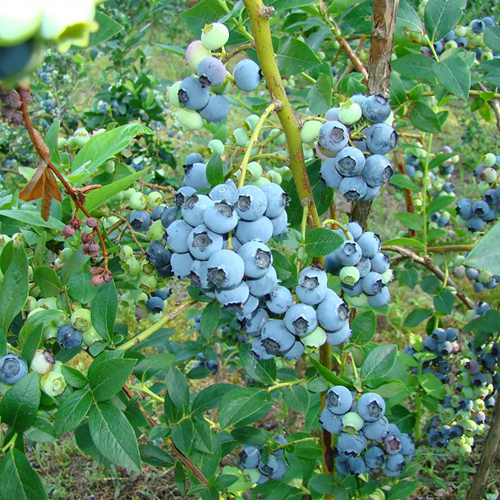
Description
Blueberry Elizabeth is a mid-late ripening variety. In the southern regions, it is sung from the second half of July, in other regions from late-early August. It is a tall, vigorously growing shrub. There are many shoots, they are of medium thickness, green with a reddish-brick tinge, laterals (fruit branches) are brick-red. With age, the stems lumber and turn light brown. Lateral shoots of Elizabeth branch strongly to the sides and into the depths of the bush. Therefore, this blueberry takes up quite a lot of space in width, which must be taken into account when choosing a planting scheme. The variety requires regular and careful pruning. Reproduces well by green cuttings. Stems are erect, but spreading, mostly 1.5-1.8 meters high, the width of the bush is up to 1.5 meters. The habit is raised, open.
Leaves are dark green, medium in size and oval in shape, pointed at the ends. They are smooth, dense, with a slight glossy sheen. By autumn, they acquire a yellowish-red color. The root system is fibrous, well branched, without hairs absorbing nutrients from the soil. It germinates shallowly, up to 30-40 cm. The variety is sensitive to the required acidity of the soil, it should be at a pH level of 3.5-4.0. The flowers are white, bell-shaped, 1-1.5 cm long, with small teeth curved back.Elizabeth is a self-pollinating blueberry, but cross-pollination with other varieties blooming during the same period is desirable. This allows the fruit to be of better quality, tastier and larger in size. The plant blooms in the second half of May and the first half of June, depending on the region of cultivation.
The berries are of high quality, dense, round, slightly flattened, medium-large and large, sometimes just huge. Their size varies from 1.6 to 2.2 cm in diameter, sometimes it can go up to 2.5 cm! The fruit weighs 1.6-2 grams, but can hold up to 2.4-2.7 grams. The skin is thin but elastic. The berries are collected in loose, loose clusters. Ripe ones are easily removed from the bush with a characteristic sound when the tail is torn off, the scar after harvesting is dry and small. Ripening of Elizabeth fruits is amicable, but the harvesting period is relatively long (mostly 2-3 weeks). After ripening, the blueberry fruits hang on the bush for a long time without crumbling.
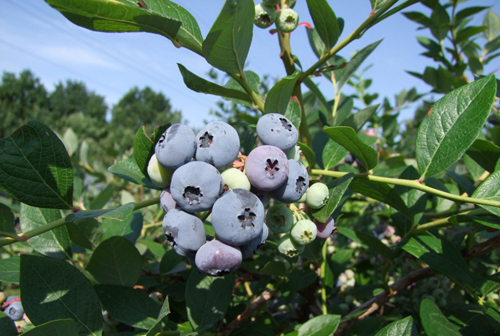
The berries are deep blue, evenly colored, with a dense light waxy coating. What is typical for the variety - unripe green fruits with a milky reddish tint. Miss White's labors were not in vain. Berries do have a rich, soft, sweet taste. It is bright, multifaceted, with currant and grape notes. Sugar and acid are perfectly balanced, astringency is not felt. The fruit also has a persistent pleasant aftertaste. Strong dense aroma only emphasizes all the sophistication of the berry taste. According to many experts, and ordinary gardeners in Europe and America, Elizabeth is the best variety in terms of tasting characteristics from the group of medium-late. And Miss White herself, in an article in the New York Times, considered the taste of this blueberry exquisite. Berries are high in vitamins and antioxidants.
The transportability of the fruits is at a good level, but transportation in small cardboard boxes or plastic booties of 1 and 0.5 kg is desirable. Due to the thin skin, more or less long-term storage is possible only in refrigerators. The fruits are suitable for personal consumption and sales in fresh berry markets, as well as direct sale in chain stores, supermarkets. At the same time, they use a scheme that is already used in our country by some farms. The so-called You-Pick (“U-Pick”) or Pick-Your-Own (PYO), which literally means “You will collect” or “collect your own”. In fact, this is self-harvesting of fruits by buyers at the place of crop cultivation. The client's benefit is the opportunity to personally see and select berries for subsequent consumption, for the farmer - saving on the wages of pickers and subsequent advertising of the farm by people. If, of course, they liked everything.
Large berries with an intense aroma and excellent taste make the variety one of the favorites among the best chefs and pastry chefs in Europe and the USA. The fruits of this blueberry are also well suited for all kinds of processing (preserves, jams, sauces, syrups).
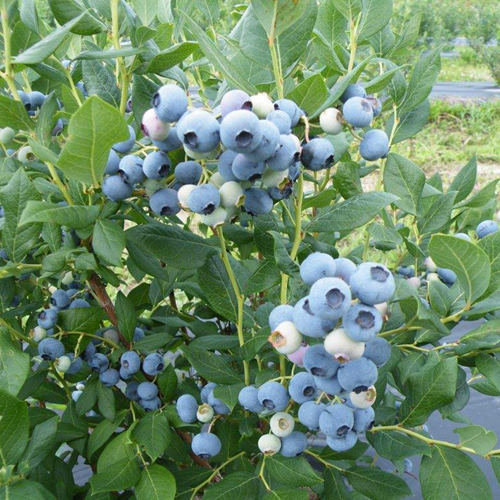
The yield is significant, mainly 4-6 kg from a well-developed adult bush. Productivity can be even higher - up to a maximum of 7.5-8 kg. But for this, suitable conditions must be created and agricultural technology must be correctly followed. Plus, it is desirable to plant in southern regions or greenhouses, protected from spring frosts. For example, in Poland, with cold summers and early autumn frosts, Elizabeth does not have time to fully give up her entire harvest. Productivity varies from year to year, there is no stability that farmers can count on. The differences in spring temperatures at the time of flowering especially affect the yield indicators. With recurrent frosts, blueberry flowers, if they do not freeze, often form the so-called barren flowers.
Elizabeth loves well and regularly moist, but well-drained, light soil. The acidity should be within the pH range of 3.5-4.0.The plant prefers planting in places well-lit by the sun. Brings partial shading. Planting with a minimum row spacing of 1.2 meters and a minimum row spacing of 2.4 meters is recommended. But, of course, it is better to practice placement on an area with a distance in a row of 150 cm, so that later you do not have to transplant already mature and rooted plants.
The variety is resistant to the main diseases of blueberries, but with high humidity and thickening of the crown, it can pick up spotting. The maximum frost resistance is good, up to -35 ° С (USDA zone 4). In connection with the active filling of the Russian market with foreign varieties, it will not be superfluous to know briefly what these zones are in general. The existing zoning was developed by the United States Department of Agriculture (USDA) and subsequently became widely used around the world, often in the characterization of plant varieties. There are 13 of them, from the zero zone with its -65 ° С to 12 zones with a temperature of + 12.8 ° С. For example, St. Petersburg is located on the border of zones 4 and 5 of the USDA, and Central Russia is the 5th zone and below.
Strengths of Elizabeth
- Large and very large beautiful berries.
- One of the best varieties in taste and aroma - the berries are sweet, the taste is multifaceted, rich, with a persistent aftertaste. The aroma is thick, intense.
- Good yield.
- Resistant to major blueberry diseases.
- The fruits are transportable over long distances, but it is advisable to use a shallow container and refrigerate after harvest.
- Good frost resistance of the variety.
- The versatility of the use of fruits.
Weaknesses of Elizabeth
- Spreading bush, strongly branching side shoots. Regular and careful pruning is required to maintain good berry size and overall plant health.
- The blueberry bush takes up quite a lot of space.
- Unstable yields due in part to fluctuations in spring temperatures during flowering.
- Ripening period. In the northern regions, in the event of a cold summer and early frosts in the fall, a shortage of harvest is possible.
- Good shelf life is only possible when stored in a refrigerator.
- The variety is of more interest for personal and small-scale cultivation.
Author: Maxim Zarechny.

